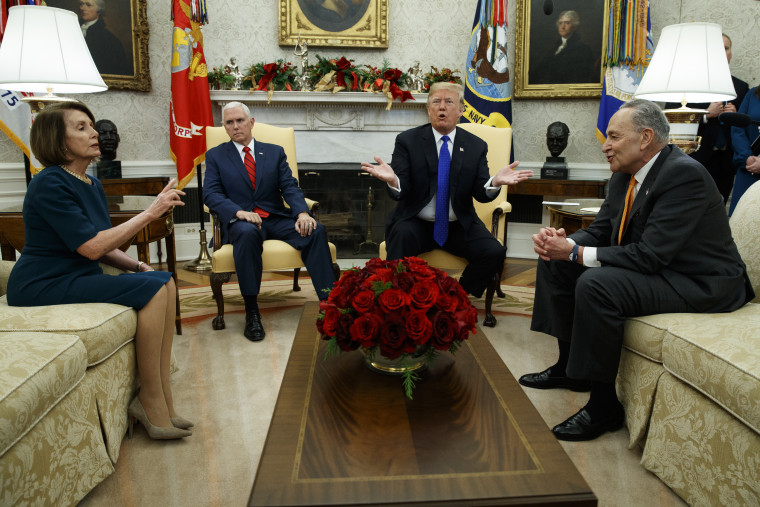After five long weeks, Donald Trump abandoned his position on the government shutdown entirely on Friday afternoon, announced he would accept the offer congressional Democrats made weeks ago, and policymakers re-opened the government soon after. There was, however, a "but" hanging over the developments.
What Congress passed, and what the president signed, was a stopgap spending measure called a "continuing resolution" (or "CR"), which renewed funding to the departments and agencies that were shut down, but only for three weeks. This started the clock on the next shutdown deadline: Feb. 15.
Is Trump prepared to force yet another shutdown? When announcing his humiliating retreat on Friday afternoon, the president specifically raised the prospect of a "shutdown on February 15th." On CBS News' "Face the Nation," host Margaret Brennan asked acting White House Chief of Staff Mick Mulvaney whether this option is really on the table.
BRENNAN: Is the president really prepared to shut down the government again in three weeks?MULVANEY: Yeah, I think he actually is.
Evidently, we're supposed to believe that Trump sees the next three weeks as an opportunity for lawmakers to approve wall funding. If Congress fails to meet his expectations, the president is prepared to force the country to endure this fiasco all over again.
Or so the story goes.
With this in mind, let's review the possible scenarios we're likely to see unfold between now and Feb. 15.
The three-week spending bill is designed to give policymakers time to work on some kind of immigration compromise. Democrats believe they have a framework in place -- including increased investments in ports-of-entry security, enhanced technology at the border, more Border Patrol agents and immigration judges, etc. -- that could serve as the basis for a larger agreement. If Republicans insist on wall funding, however, that agreement will fail to materialize.
The process will unfold through something called a "conference committee," featuring a group of 17 members selected by party leaders from both chambers' appropriations committees, which will be tasked with finalizing a spending bill for the Department of Homeland Security. If/when they put together a package agreeable to all parties, they'll present a "conference report" to be voted on in the House and Senate without amendments. If it passes, the bill would then go to the White House for a presidential signature.
There are several possibilities:
1. Maybe lawmakers will work out an agreement, Trump will sign it, the drama will end, and the political world can turn its focus to some other fight.
2. Maybe lawmakers will work out an agreement, Trump will be unimpressed, and he'll shut down the government again.
3. Maybe lawmakers will work out an agreement, Trump will be unimpressed, but he'll sign it anyway and pursue a wall by way of a national-emergency declaration.
4. Maybe lawmakers won't work out an agreement and there will be a shutdown on Feb. 15.
5. Maybe lawmakers won't work out an agreement, but policymakers will agree to another stopgap spending measure to prevent the next shutdown.
We'll learn soon enough which of these scenarios comes to fruition, but before the talks even get underway, Donald Trump is already undermining them, telling the Wall Street Journal yesterday that he expects he'll oppose whatever Congress comes up with.
The president added that he sees another shutdown as "certainly an option."
